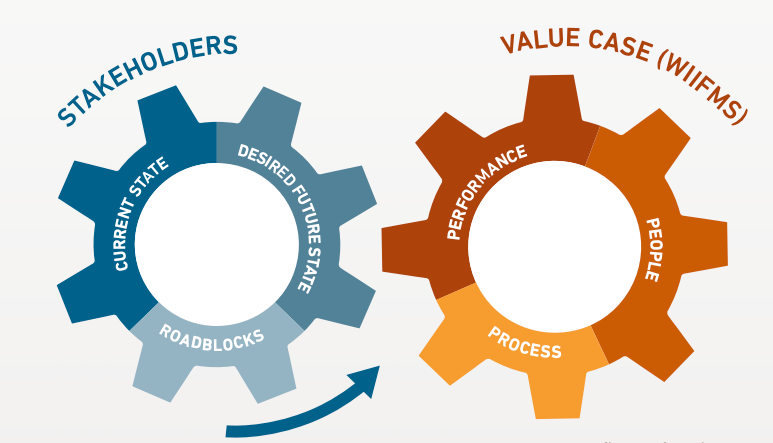“What’s in it for me?” The answer to this question not only helps to determine the value case for your organization’s initial driver for purchasing Collibra, but it can also be essential to increasing usage and adoption while reinforcing the ongoing value of making the change.
Understanding what is valuable
Focusing on the value case involves several steps to understand what is valuable, how it may vary between individuals and how Collibra can fit into this value. The first step involves identifying organizational goals, objectives and priorities and how they can be impacted by improved data governance and metadata management. This is done in order to establish significance for the implementation and to engage leadership across multiple levels.
Next, determining what groups will be impacted by the Collibra implementation will provide information on what the specific value case will be for each of these groups. This is where the “what’s in it for me?” question comes into play and will help each group choose if they want to make a change in order to implement Collibra. They will only do this if the value of making the change outweighs the effort it will take to make the change.
The next step is all about asking questions. Communicating with each group can help all parties understand data challenges and how the desired future state could be reached using a data governance solution.
A few questions to consider:
- What is the current state of their work around data and data governance? For example, how do they define and use metadata? How do they understand what data is used in reports? How do they search and access data sets?
- What is their desired future state? How could things be better with an integrated data governance solution?
- What is getting in the way of doing their work the way they want to?

Common WIIFM Themes
There are a few themes that best describe the goals determined by stakeholders. These themes can lay the groundwork for your value case and can include:
- Performance: goals and measures that are important to the team such as strategic goals and key performance indicators.
- Process: work that is needed to achieve desired performance such as productivity and efficiency.
- People: how the implementation will impact individuals including frustration and interdepartmental conflict.
- Data: what data is available and issues or challenges with that data such as availability and access to needed data and data issues.
Getting Leadership Buy-In
Here are some examples we have put into practice of value types and the value gained from each.
Performance: Collibra will make several processes faster including turnaround time in delivering reports to customers, ability to find the data and reports they need faster, and time needed to locate information in order to increase efficiency in delivering reports to customers.
Process: Collibra is a searchable repository. This will allow users to locate the data they need and understand its context, as well as find other key information about the data used. They can also request access to data using established processes to protect security and privacy.
People: Collibra use will increase trust in data, and this data will be identified and developed by Subject Matter Experts trusted by data users. This data will be organized using processes to ensure that it is high-quality.
Ultimately, focusing on the value case helps to show the people doing the implementation how their work will impact the organization—which is pivotal for ongoing engagement too.
Remember, focus on the value case is just one of nine Collibra best practices we recommend. Keep an eye out for our next post on how to engage the right people at the right time.
View Becky Lyons’ Collibra Best Practices article series.
View Becky Lyons’ Collibra Best Practices article series.


